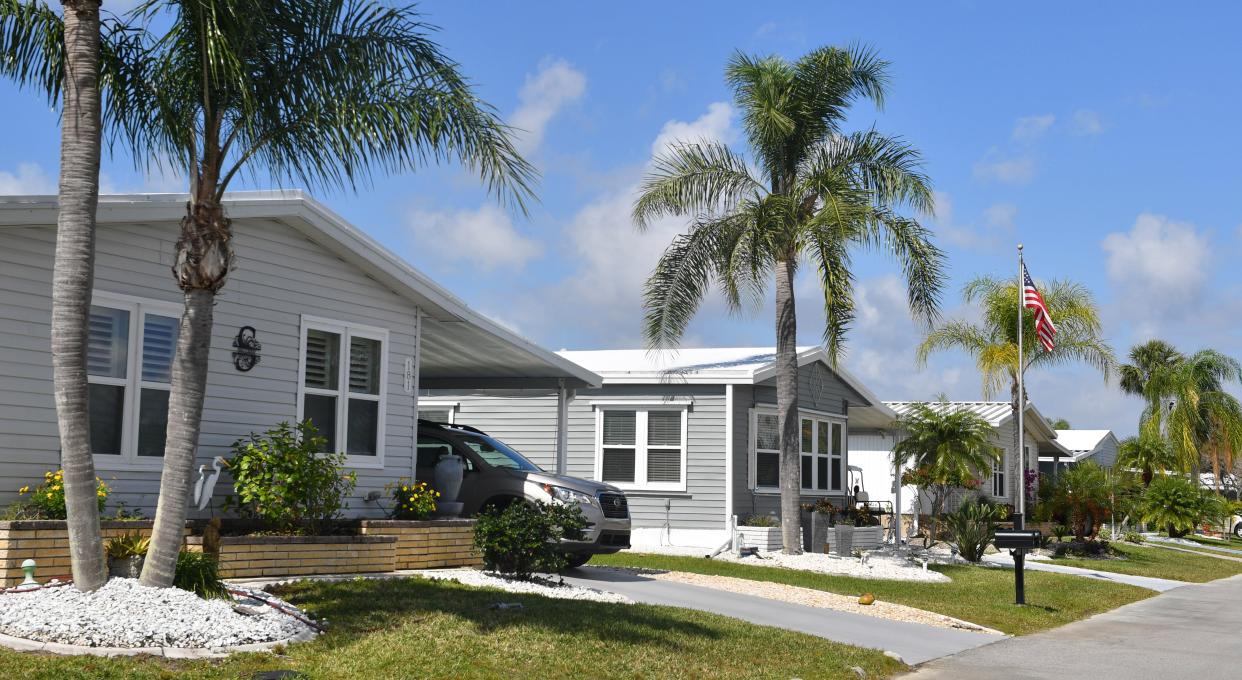Governments should lighten up on zoning for affordable manufactured homes | Guest column

The Institute for Justice’s Katrin Marquez should be commended for her and her organization’s principled stance on food trucks in Haines City or elsewhere.
Honest and authentic competition and freedom of choice are bedrock principles in the U.S. But those principles have been slipping for years. One of those areas is the right to choose affordable housing. As HUD data recently confirmed, higher homelessness is just one result.
In an RV park near Auburndale are a few tiny houses. Odds are good they are "parked" there because zoning boards often won’t let them go elsewhere. The Institute for Justice stepped into more than one case on behalf of tiny housing.
That said, who is acting on behalf of the right to choose affordable manufactured housing?
Manufactured homes are about half the cost per square foot as conventional single-family housing, per Census Bureau data.
Zoning boards in Florida and beyond create artificial barriers for access to more manufactured housing that Harvard’s Joint Center for Housing Studies recently documented. While useful and largely supportive of modern manufactured homes vs. the old trailer houses and mobile homes from the 1940s-1960s, Harvard’s JCHS researchers missed some key facts.
Consider the following.
According to the Foundation for Affordable Housing, the lack of affordable housing near where it is needed is costing the U.S. economy about $2 trillion dollars annually.
"Right now, in almost no market in this country, can a [conventional] homebuilder build a house that is affordable for a first-time homebuyer," National Association of Home Builders CEO Jerry Howard said on Fox Business. "We can't do it. The costs that are on us make it impossible."
Depending on the source, estimates for how many housing units are needed in the U.S. are often in the 6 million to 10-plus million units range. Millions of younger adults moved back in with mom and dad in the past three years because they can’t afford high cost rentals, or can’t save enough to qualify for a home loan.
Unlike conventional housing, many could buy a manufactured home on privately owned land with FHA, VA, or USDA financing for about the same payment as a rental.
In theory, manufactured housing could close the gaps conventional builders can’t.
Congress studied manufactured housing before passing the widely bipartisan Manufactured Housing Improvement Act of 2000. Part of the provisions in the MHIA included more consumer protections than even many conventional builders offer. Another provision is known as “enhanced preemption.” Rarely used, federal preemption could allow HUD to “preempt” local zoning against manufactured homes.
In California, after state preemption over local zoning broadened opportunities for Accessory Dwelling Unitplacements, production of ADUs soared. Per Bing’s AI powered Copilot:
Between 2016 and 2022, the number of ADUs permitted each year in California skyrocketed by 15,334%, resulting in a collective 83,865 ADUs permitted.
With the exception of 2020, which was impacted by the COVID-19 pandemic, ADU permitting has consistently increased by 42% to 76% annually since 2016.
The Manufactured Housing Association for Regulatory Reform offered to team up with a Manufactured Housing Institute state affiliate in 2019 to take up a test case to force the MHIA enhanced preemption issue. No MHI-linked state association said yes, nor has MHI done so, per MHARR.
'On to the next adventure': Anne Kerr was Florida Southern's heart and mind for 20 years | Bruce Anderson
In a perfect world, informed citizens should be able to walk into or message a local zoning board and say they want to buy a piece of property and place a manufactured home on it. But zoning boards, like those Haines City restaurants Marquez referenced, are often working in the interests of local builders to bar more affordable options like tiny houses or manufactured homes.
Manufactured Home Living News developed the largest known publicly available collection of third-party research that debunks common misconceptions about manufactured homes. Meanwhile, MHProNews has documented how several MHI members are consolidating production, retail and "mobile home parks" (more properly, land-lease manufactured home communities). As a result, site fees, or lot rent, in these communities have been jumping in recent years.
Lack of new development and too few new manufactured homes has consequences.
The answer ought to be simple. Enforce existing antitrust laws and the enhanced preemption provision of the MHIA.
Democratic lawmakers wrote HUD Secretary Mel Martinez in 2003 asking for the latter, as MHARR has documented. Congress held hearings in 2011 and 2012 on the MHIA and federal preemption. But nothing happened. Anyone who thinks that the government is working properly should spend a few hours just reading about the consequences related to these issues.
Meanwhile, the solution to the affordable housing crisis is hiding in plain sight because existing laws aren’t being properly enforced. A few are getting richer, most are suffering. And the economy is $2 trillion a year poorer because of it.
There ought to be a law…oh, pardon me, there already are.
L. A. “Tony” Kovach lives in a manufactured home in Winter Haven. He is the co-founder of MHProNews and MHLivingNews, trade publications serving segments of the manufactured home industry.
This article originally appeared on The Ledger: What do zoning boards have against manufactured homes? | Guest column
